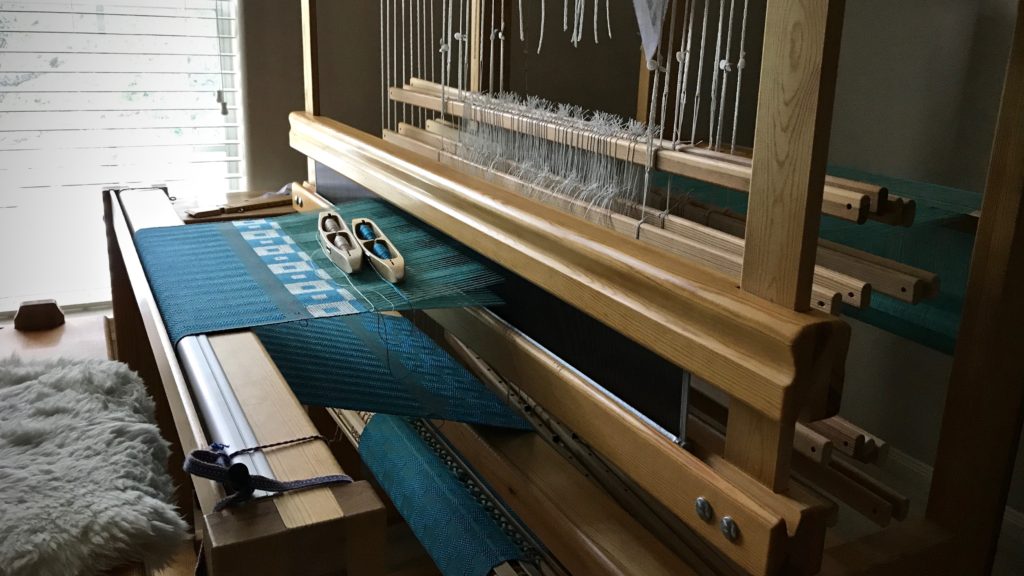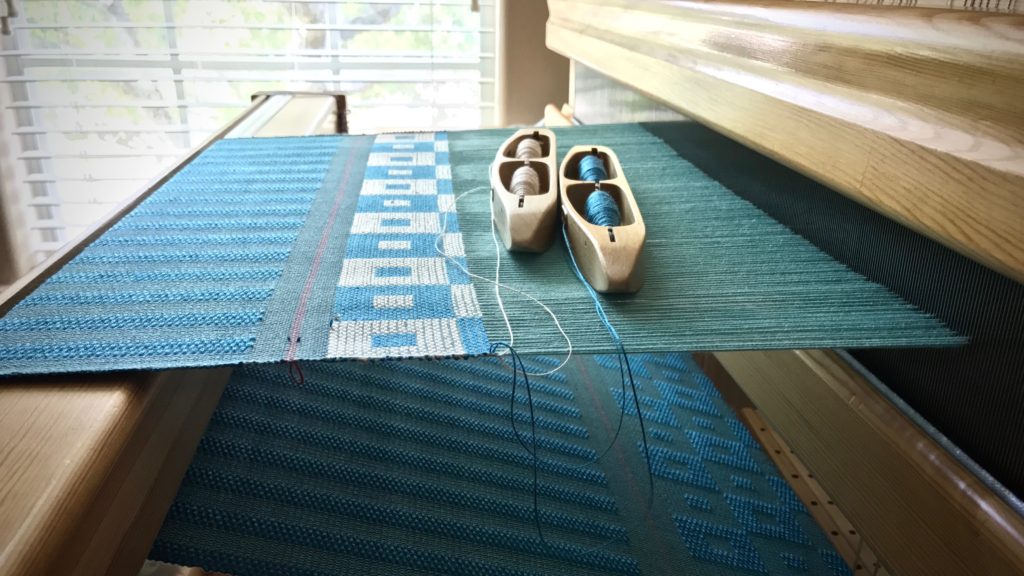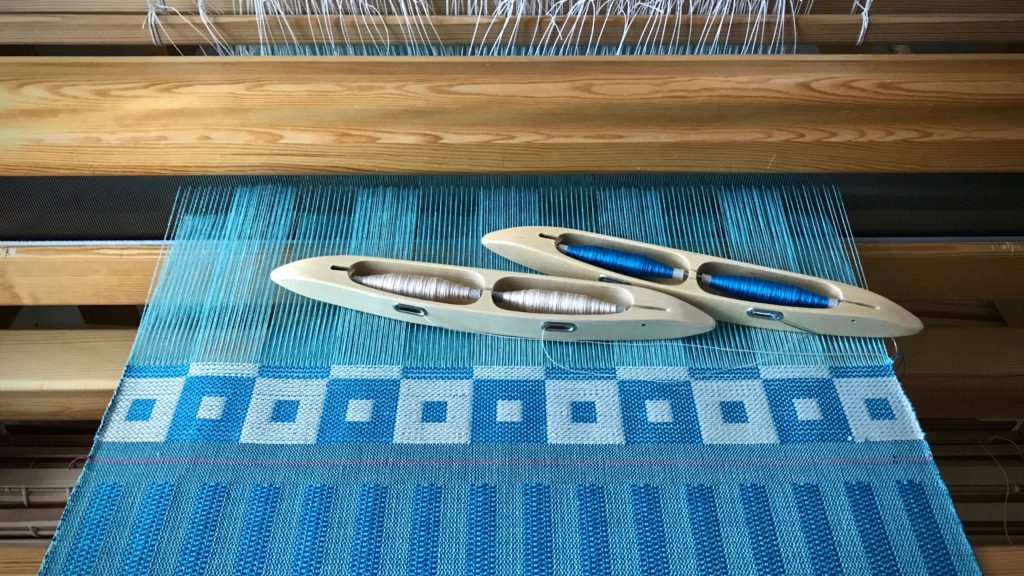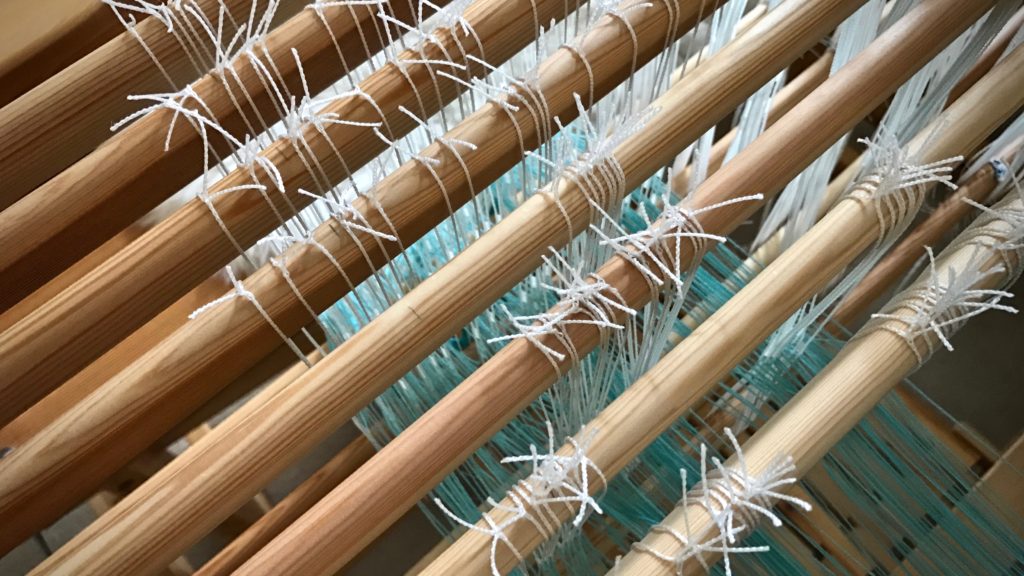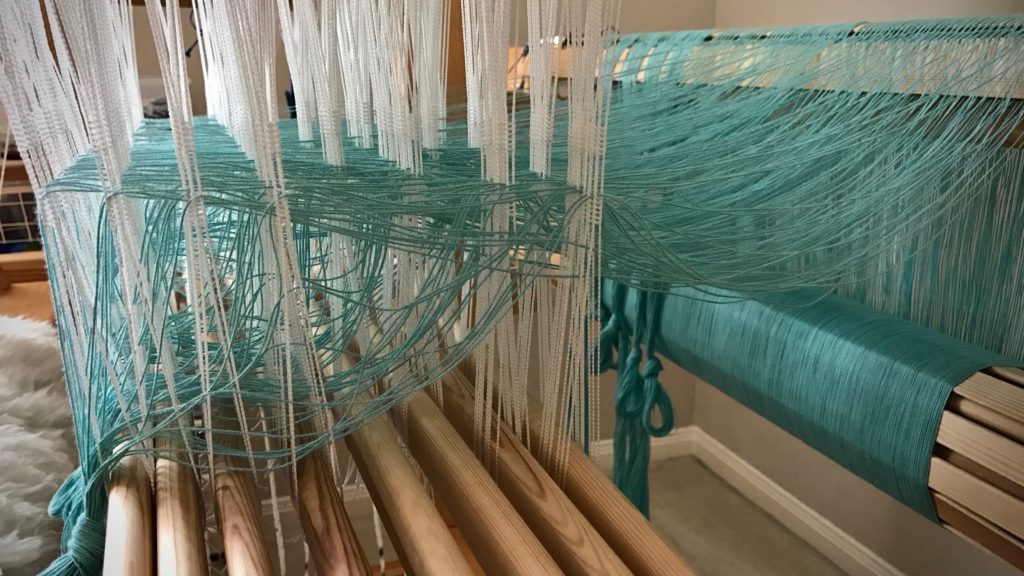The color is rich, the drape is fluid, and the pattern in the lustrous cloth is eye-catching. “Kuvikas to taqueté” was not an easy project. Eight shafts, double treadling, and double-bobbin shuttles with slick 8/2 Tencel weft. But the fabric is incredible!
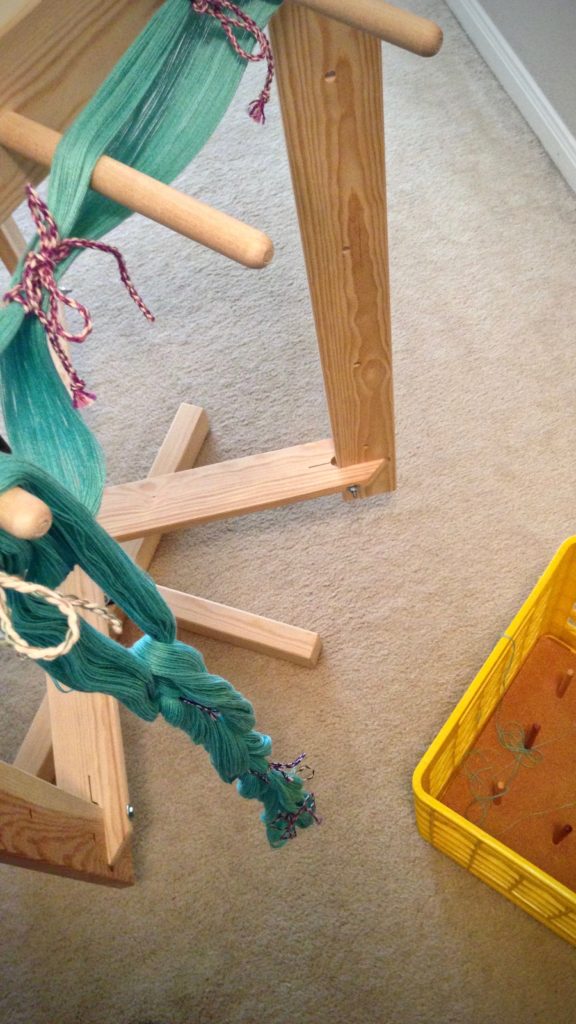
Thanks to a unusual tie-up, two treadles are pressed simultaneously, something I had not thought possible for a countermarch loom. I started with kuvikas (summer and winter), which has tabby picks between the pattern picks. The dark teal 8/2 cotton tabby weft and the bright teal Tencel pattern weft produce a tone-on-tone effect for the square and stripe patterns. These two pieces will become the front and back of a throw pillow.
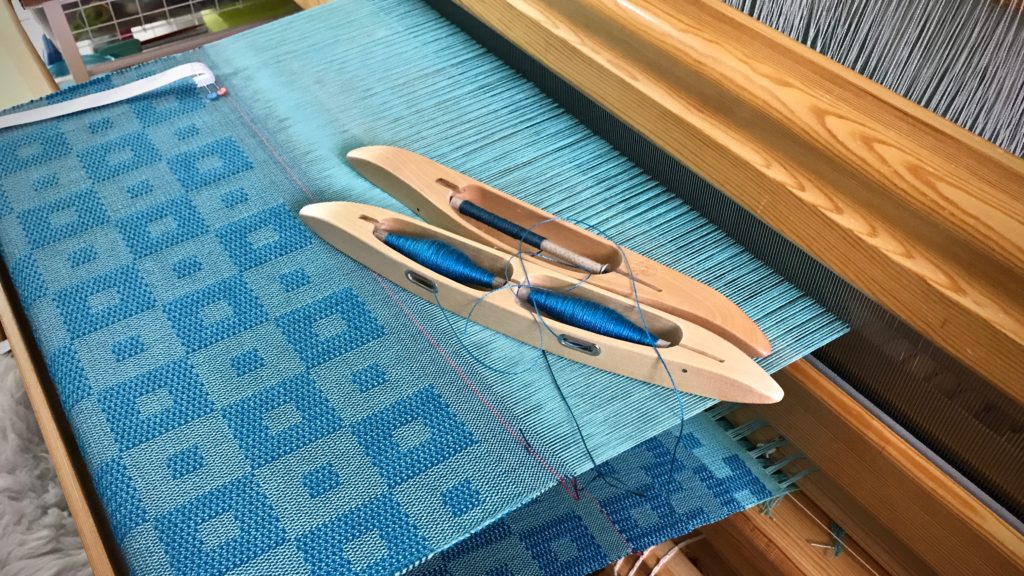
I then changed the treadle tie-up to switch from kuvikas to taqueté. The taqueté has no tabby weft. The teal and cream Tencel weft threads lay back-to-back, producing a double-faced fabric. This piece is being used as a table runner.
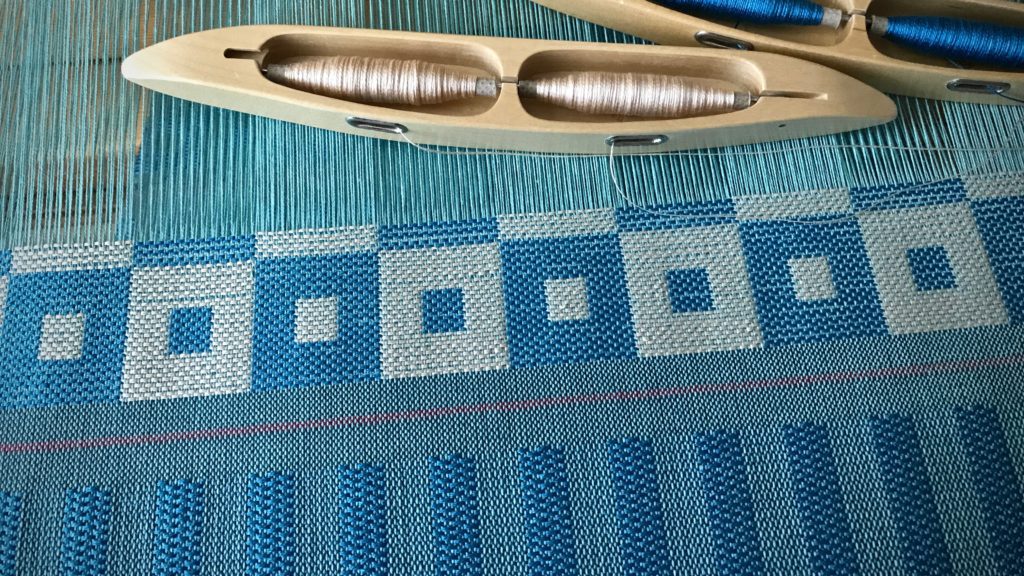
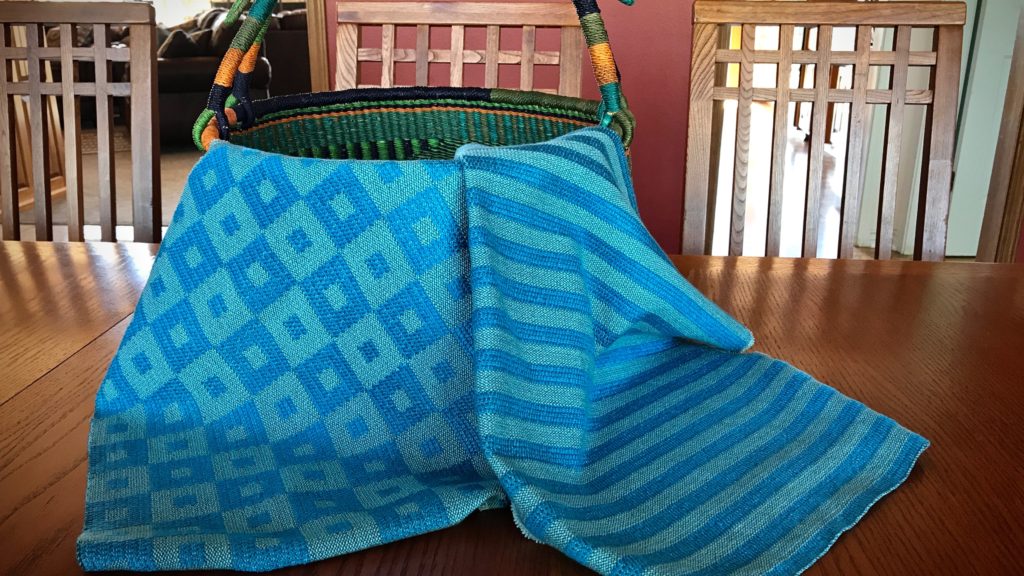
Enjoy the little slideshow video I made for you that follows the process from three lovely aquamarine warp chains to fabric glistening in the sun on a Texas hill country table.
May you finish something that is not easy.
Happy Weaving,
Karen
Do you remember my Handwoven Thick and Thin Towels (that appeared on the cover of Handwoven), and my Black and White Towels (These Sensational Towels)? I will be teaching a workshop on that thick and thin technique at Shoppes at Fleece ‘N Flax in beautiful Eureka Springs, Arkansas August 24 – 26, 2017. You’re welcome to join us! I’d love to see you there! Contact the shop at the number below if you are interested.
https://www.facebook.com/1509042016009851/photos/a.1519556898291696.1073741829.1509042016009851/1933085693605479/?type=3&theater

